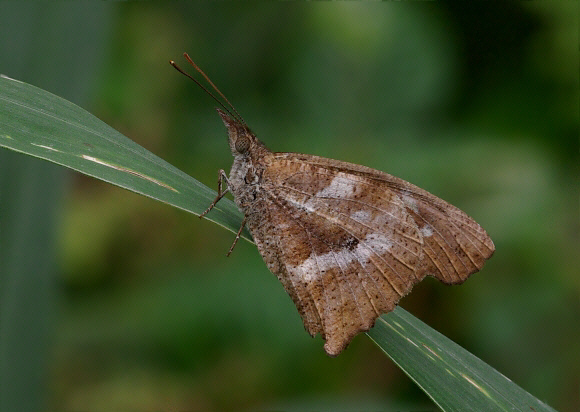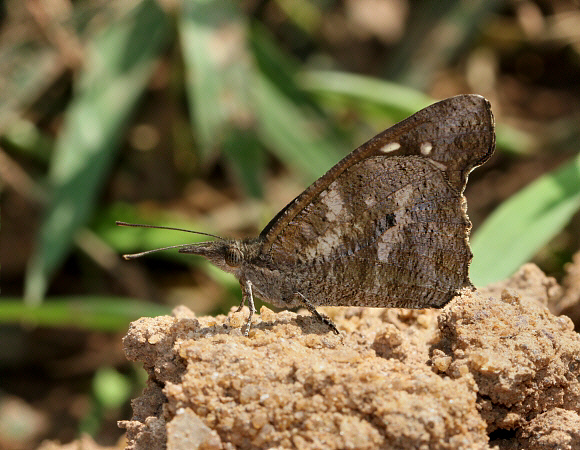
Introduction
The Libytheinae are one of the most primitive groups of butterflies, and were probably the first to branch from the Nymphalid evolutionary tree. The Libytheinae contains only 13 species worldwide.
All of the Old World Libytheinae are placed in the genus Libythea. There is one species on Mauritius, one in Africa, 2 on Madagascar, and one on the Marquesas islands in Polynesia. The most widely distributed species is celtis which has an almost contiguous distribution from Portugal to Japan.
Libythea are characterised by having dark uppersides marked with orange streaks and spots, and undersides cryptically marbled in shades of brown. The angular fw apex is another feature common to all the species. By far the most characteristic feature however is the long “beak” formed by the elongated labial palpi. The palpi are sensory organs used for the detection of pheromones, and are far more prominent in Libytheines than in any other group of butterflies.
Libythea labdaca is distributed across most of sub-Saharan Africa. On the north African coast it is replaced by celtis.
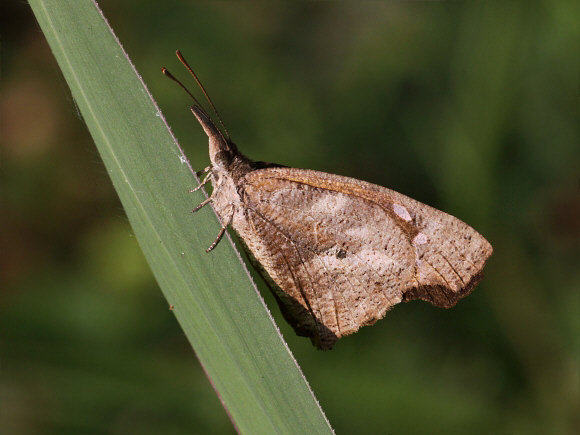
Habitats
This species is most frequent in secondary forest and savannah / woodland mosaics, but migrating swarms can turn up anywhere from city gardens to clearings and logging roads in rainforest.
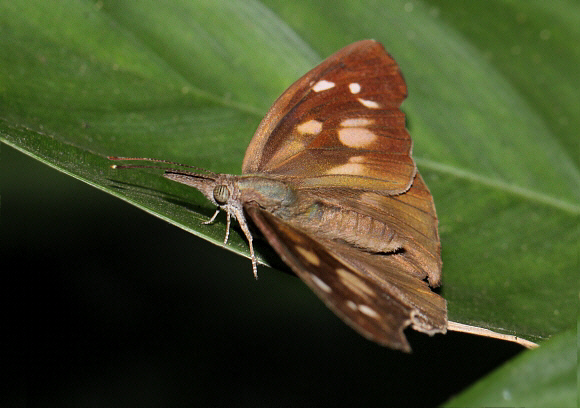
Lifecycle
The eggs are tall, barrel shaped, and laid on Celtis kraussiana or C. sayauxii ( Ulmaceae ).
The caterpillars are similar to those of Pierines, being green, cylindrical, and covered in a layer of short fine setae. There is a thin yellow line along the back of the abdominal segments, and another fine yellow line along the sides.
The chrysalis is similar to that of Satyrines – smooth, elongated, and suspended by the cremaster without the use of a silk girdle.
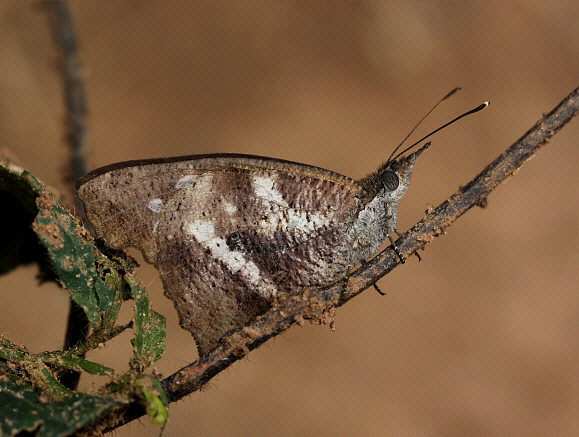
Adult behaviour
Libythea labdaca is migratory and is often seen in vast swarms. Males settle to imbibe dissolved minerals from muddy ground along forest tracks and roads. They are very active and highly alert. If disturbed they fly up and settle on twigs, where they are perfectly disguised as dead leaves, but they soon return to feed on the ground once the danger has passed.
